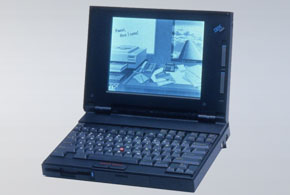The recent launch of the iPhone 8 and iPhone X proves at least one thing: Expectations for new technology just keep growing. Hardly a day goes by without a tech pundit, writer or industry luminary moaning about the lack of innovation.
Yet, we now have Dick Tracy-style watches strapped to our wrists. We have hand-held devices that function remarkably like a Star Trek Tricorder. We can video chat from the Great Wall of China and operate our smartphone or computer with voice commands.
The 25th anniversary of the ThinkPad reminds of just how far we have come. The device— introduced by IBM on October 5, 1992—wasn’t the first portable computer to appear on the market.
Mobile PCs began to take shape in the late 1970s. By 1981, the Osborne 1 appeared. It weighed 24 pounds, sported a 5-inch screen and included two 5 ¼-inch floppy drives—all for $1,795. Eight years later, Apple introduced a Macintosh Portable, which later became the popular PowerBook.
However, the ThinkPad 700C was arguably the first laptop computer for the masses. Industrial designer Richard Sapper, inspired by the shape of the Japanese Bento Box, introduced size, weight and design innovations that altered the trajectory of mobile computing.
These included a TrackPoint button embedded in the keyboard, eliminating the need for an external mouse or control device, and a butterfly keyboard in the 701C model. The ThinkPad, which weighed 7.6 pounds, cost $4,350 and came with a 120MB hard drive, a 3 ½-inch floppy drive and an active-matrix LCD.
The ThinkPad quickly became the darling of business users, and it was even used on the Space Shuttle and in the International Space Station. IBM sold the company to Lenovo in 2005, and the ThinkPad remains incredibly popular today.
Current versions include more advanced titanium construction and entirely new form factors. For instance, the ThinkPad Yoga functions as both a laptop and a tablet computer. The keyboard flattens when the device is placed in tablet mode.
It’s easy to forget how far portability and mobility have advanced over the last quarter century. Smartphones, tablets and mobile computers are entrenched in our lives. Wireless connectivity is now a given. Artificial intelligence (AI), augmented reality (AR) and virtual reality (VR) are now pushing the boundaries even further.
But, once upon a time, the ThinkPad changed everything.










